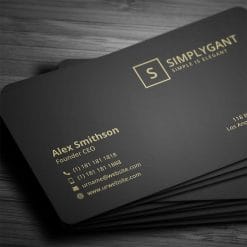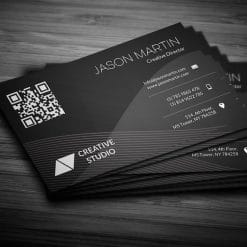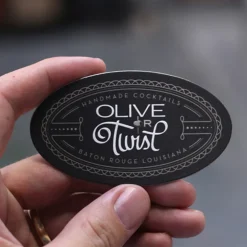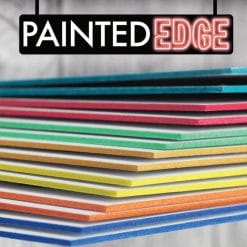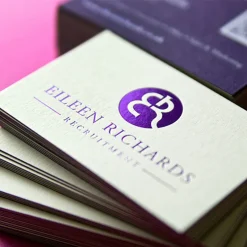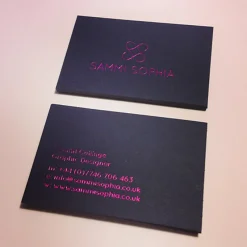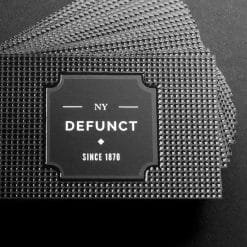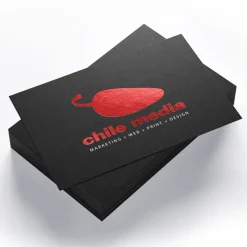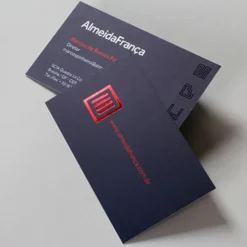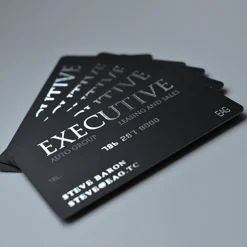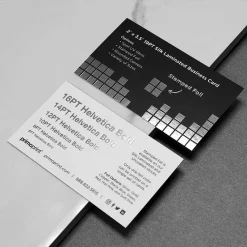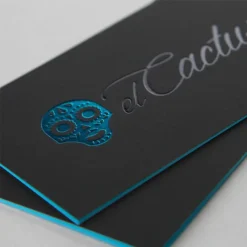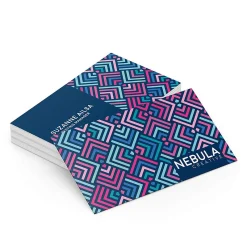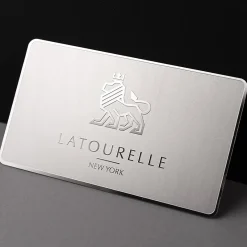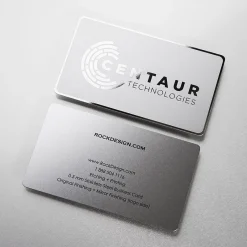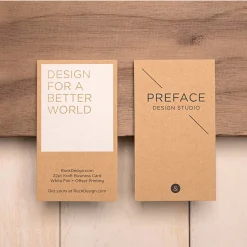Subtotal: $0.00
Standard Business Cards
Matte lamination is a process where a thin matte film is laminated on to a paper surface to protect the print, make the surface stronger and enhance its overall look.This is a popular option, as matte lamination provides a classy, professional look and feel to printed products. Matte lamination is currently very fashionable as it produces a sophisticated finish that also adds value to the print. The films are available in different thicknesses and finishes. Using different laminate thicknesses can add stiffness and strength to a printed product.
Die Cut Business Cards
Die cutting is a fabrication process that uses specialized machines and tools to convert stock material by cutting, forming, and shearing.It starts with a part called, unsurprisingly, a die. A manufactured die is a specialized piece of metal tooling used to cut a specific shape out of a material.
Edge Painted Business Cards
Edge painting at its surface sounds pretty simple – it’s a process by which color is applied to the edges of cards, invitations, even books or journals. Edge painting can be done in any color, including metallics and foils , and is usually mixed by hand to be matched to a specific Pantone color.
Foil Stamp Business Cards
Foil stamping, also known as foil printing, is a versatile printing technique that involves applying a metallic or pigmented foil to a surface in order to create a decorative finish. The process makes use of metal dies, combined with heat and pressure, to permanently bond a thin foil film to a paper-based substrate.
Spot UV Business Cards
Spot UV refers to the application of a clear polymer coating to a specific area (or areas) of a printed piece to highlight it, rather than coating the entire surface of a printed item.
Foil Stamp Business Cards
Foil stamping, also known as foil printing, is a versatile printing technique that involves applying a metallic or pigmented foil to a surface in order to create a decorative finish. The process makes use of metal dies, combined with heat and pressure, to permanently bond a thin foil film to a paper-based substrate.
Foil Stamp Business Cards
Foil stamping, also known as foil printing, is a versatile printing technique that involves applying a metallic or pigmented foil to a surface in order to create a decorative finish. The process makes use of metal dies, combined with heat and pressure, to permanently bond a thin foil film to a paper-based substrate.
Standard Business Cards
Lamination is typically about getting a visual effect: gloss is extra shine, matte is a dull finish. Soft touch lamination looks like a standard matte finish, but adds extra depth. Soft touch, or velvet, lamination, appeals to the sense of touch. The smooth velvet feel creates a luxurious experience for anyone holding your product.
Die Cut Business Cards
Die cutting is a fabrication process that uses specialized machines and tools to convert stock material by cutting, forming, and shearing.It starts with a part called, unsurprisingly, a die. A manufactured die is a specialized piece of metal tooling used to cut a specific shape out of a material.
Foil Stamp Business Cards
Foil stamping, also known as foil printing, is a versatile printing technique that involves applying a metallic or pigmented foil to a surface in order to create a decorative finish. The process makes use of metal dies, combined with heat and pressure, to permanently bond a thin foil film to a paper-based substrate.


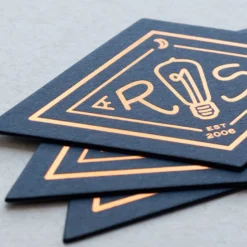 Special shape business cards
Special shape business cards 